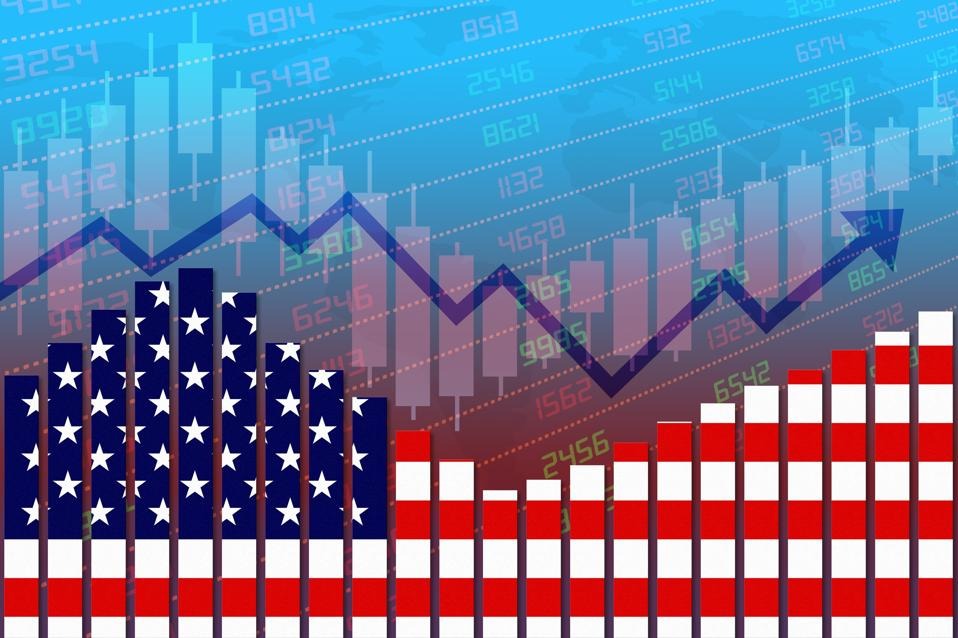The US economy staged a stronger-than-expected comeback in the second quarter of 2025, growing at an annualized rate of 3%, according to the Bureau of Economic Analysis’ advance estimate released on July 30. This marks a significant turnaround from the 0.5% contraction recorded in Q1, which had sparked recession concerns across markets.
Key Highlights from the Q2 GDP Report
- Real GDP grew at a 3% annualized pace, beating Bloomberg’s consensus estimate of 2.6%
- Consumer spending rose 1.4%, recovering from a near-stall in Q1
- Imports plunged 30.3%, reversing a 37.9% surge in the previous quarter
- Exports declined 1.8%, while investment and inventory levels remained subdued
- Final sales to private domestic purchasers increased 1.2%, down from 1.9% in Q1
- Core PCE inflation moderated to 2.5%, down from 3.5% in Q1
Drivers of the Rebound
- Trade Balance Shift
- The most significant contributor to Q2 growth was the sharp drop in imports, which are subtracted from
GDP calculations.
- The decline followed a Q1 surge driven by businesses front-loading purchases ahead of President Trump’s April tariff announcement.
- While exports also fell, the net trade balance improved substantially, lifting headline GDP.
Consumer Spending Recovery
- Spending on services such as healthcare, food services, and financial products saw notable gains.
- Goods consumption rebounded, led by motor vehicles and pharmaceutical products.
- The rebound suggests that consumers are adapting to tariff-driven price shifts, though disposable income growth remains modest.
Inventory and Investment Trends
- Private inventory investment declined, especially in chemical manufacturing and wholesale trade.
- Business investment in equipment remained weak, reflecting caution amid trade policy uncertainty.
- Government spending offered a mild boost, but fiscal constraints limited its overall impact.
Policy and Market Context
- The Q2 data arrives just ahead of the Federal Reserve’s policy meeting, where rates are expected to remain unchanged in the 4.25%-4.50% range.
- President Trump’s aggressive tariff strategy continues to inject volatility into trade flows and corporate planning.
- Despite the rebound, economists warn that underlying growth remains fragile, with final sales and business investment showing signs of strain.
- The probability of a US recession in 2025 has dropped to 17%, down from 66% in May, according to Polymarket data.
Inflation and Price Metrics
- The PCE price index rose 2.1% in Q2, slightly above the Fed’s 2% target but down from 3.7% in Q1.
- Core inflation, excluding food and energy, came in at 2.5%, suggesting easing price pressures despite tariff pass-throughs.
- The moderation in inflation may give the Fed room to hold rates steady and reassess in December.
Looking Ahead
- Economists expect a slower second half of 2025, with full-year growth potentially capped at 1.5%
- Tariff updates from July and ongoing trade negotiations could further influence Q3 performance
- Business sentiment remains cautious, and productivity gains from AI adoption may be needed to offset labor force constraints
Conclusion
The 3% GDP growth in Q2 offers a welcome reprieve from early-year contraction, but the underlying data paints a picture of an economy navigating policy headwinds and structural challenges. While consumer resilience and trade adjustments have buoyed the numbers, sustained momentum will depend on clarity in fiscal and trade policy, as well as continued strength in the labor market.
Source: Advance Q2 GDP data released by the US Bureau of Economic Analysis



